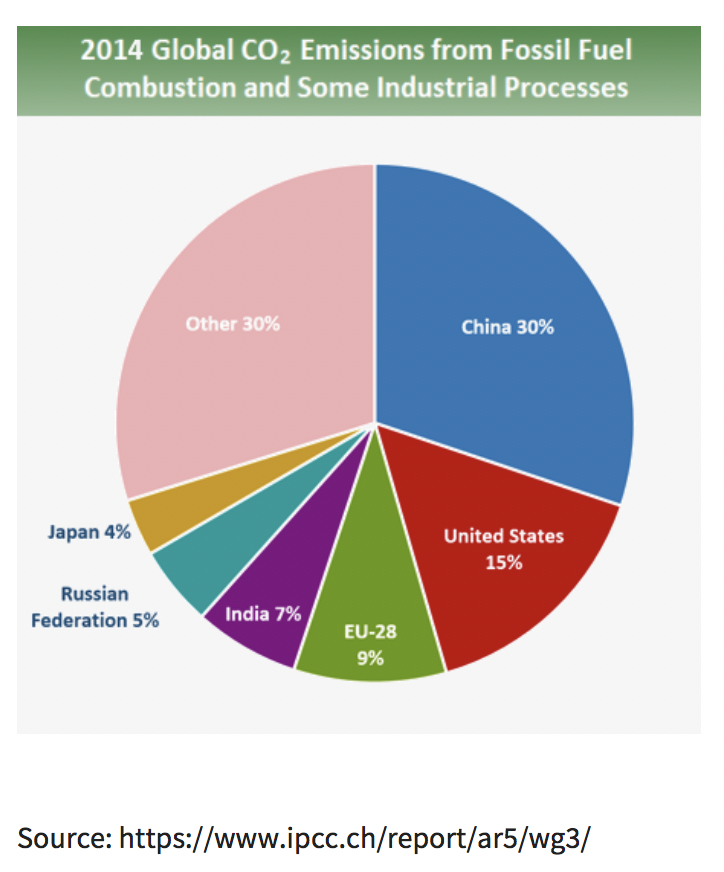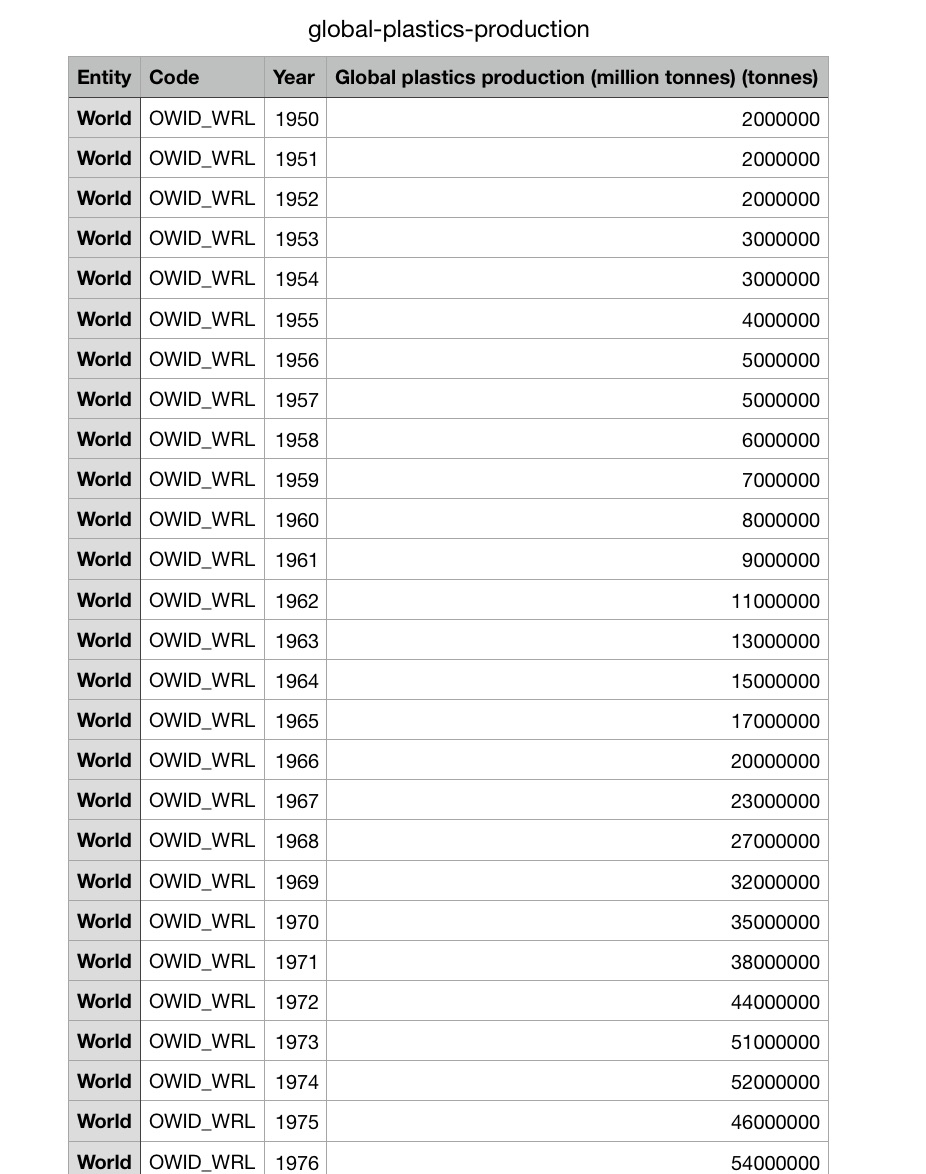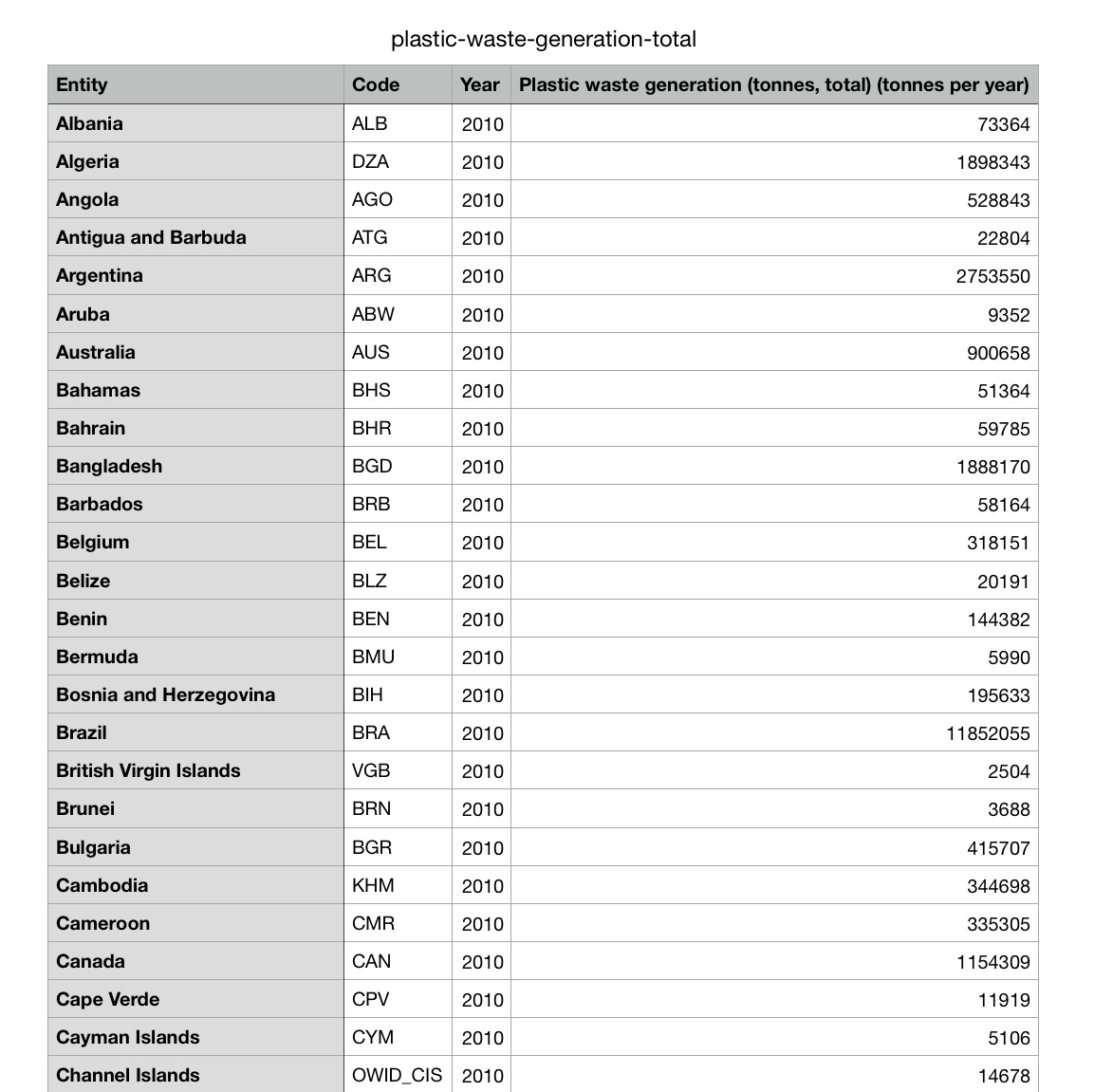Look Again
The domestic scene of everyday homes are saturated with unsuspected items of the ordinary. How much of that is made from petroleum production such as plastic, nylon or rubber. "Look Again" opens a discussion about our dependence on one of the sources of fossil fuel: Oil. It opens a wider prospective on the ubiquitousness of petrochemicals products in our everyday things, and how some of these products, simultaneously, can save human lives, but yet is having a catastrophic impact on earth.
produced by: Daniah Alsaleh
Introduction
Climate change and global warming are terms that have been used interchangeably, but they actually refer to different things. Global warming refers to the long term warming of the planet due to the increasing concentration of the greenhouse gases in the atmosphere, whereas climate change although includes global warming, encompasses the broader changes that are happening over a very long period of time. Greenhouse gas is a gas that absorbs and emits radiant energy within the thermal infrared range, and without the greenhouse gasses, the average temperature of Earth’s surface would be about
-18 C rather than the present average of 15 C.
Concept and background research
The current levels of concentrated greenhouse gasses have reached unprecedented levels in the last 800,000 thousand years, and 16 of the 17 warmest years on records have occurred during the years since 2001. The most significant greenhouse gasses are water, carbon dioxide, methane, nitrous oxide, and ozone. According to the Environmental Protection Agency EPA. Focusing on atmospheric carbon dioxide, it appears it is generated from two primary resources- natural and human activities. Natural sources include most animals which exhale carbon dioxide as a waste product, and the carbon dioxide activities that is concerned with the human activities are primarily emissions from energy production, including burning of coal, gas and oil. Human activities since the start of the industrial revolution have produced an increase of 45% of Co2 in the atmosphere. Most of that comes from combustion of fossil fuels with the additional contribution of deforestation, changes in land use, soil erosion and agriculture. Should these gas emissions continue at their rate, global warming will have a catastrophic effect on earth’s surface temperature with harmful effects on the ecosystem, biodiversity and human livelihoods.
Extinction Rebellion, a non-violent civil disobedience activist movement, the Swedish teenager climate campaigner Greta Thunberg, and the new climate international school movement: school strike for climate, have been making headlines with their commitment and dedication to tackle global warming and force governments to be more committed to tackling these problems and hold them to their promise to the 2016 Paris climate agreement. With all of this campaigning, one cannot but be affected by their climate cause, especially while living in London, temperatures soared up to 38 C this summer, the highest temperature ever recorded in the UK. Recycling plastics, using public transportation, eating less meat, and trying to look for better sustainable living resources was not enough, I felt that I had a responsibility to do more. Looking at my options I started to look at the amount of plastics I use every day and started to research fossil fuel products and the impact it is having on earth. This was the ignition that started my project, which lead me to look at plastics in a different light: are they the enemy or are they Human’s best friend? My project looks at human’s unhealthy dependency on one form of the fossil fuel sources; crude oil and its petrochemical products; polymers and in particular, Plastics.
Plastic is not just plastic bottles or plastic bags, but it is an element that saves lives, saves energy, and counter intuitively saves carbon. Iv Bags, syringes, incubators, dialysis machines, pacemakers, packaged medicine, protective vests and seat belts are made of or have parts of polymer products. Plastic is light weight hence saves on fuel usage which translates into reduction of carbon dioxide emissions. Plastic can make buildings more energy efficient by using sealant plastic materials which keep rooms warm in winter and cooler in summer. Such examples are just touching briefly on how much people depend on plastic, I have not even discussed their role in technology, sustainability and taking part in renewable energy.
“Look again” is an installation that addresses the ubiquitousness of plastics in a domestic scene. Although this scene is very common, it is personal too. I have used some items from my own home to be displayed, items that I use constantly which are either made or partially made from polymer: Postal envelopes, fashion jewellery, raincoat, Medicine bottles, game boards etc…. The scene is familiar, ordinary and unsuspicious. There is a coat hanger, table, chair and some picture frames hanging on the wall that display abstract art. But the piece has an uncanny feel to it, there is a sense of secrecy or, an invisible intention. There are 6 monitors, 3 hanging on the wall, and 3 scattered around the installation. Each Monitor displays a moving painting, where each painting is reading from a sensor hat and five different datasets that are somehow related to global warming. The screens are reading from:
- CSV files of Global Green gas emissions from most countries 1990-2014
- CSV files of Daily temperature records 2008-2018 of Riyadh, the capital of Saudi Arabia, the second oil producer in the world after the united states.
- A sensor hat for a raspberry pi that senses local room temperature and pressure.
- CSV file of world population by country from 1950 till the projected number in 2100.
- CSV file of global plastic production 1950-2015
- CSV file of crude oil production from 1990-2017
I was restrained by these data sets because they were readily available online. I did get in contact with an organisation that was collecting data on micro plastics, which are plastic waste in the sea that has been broken down and found in sea food and birds, but the organisation never replied.
The title “Look again”, is inspired by the book “Ways of looking: how to experience contemporary art” by Ossian Ward. Although he is playing on John Berger’s ways of seeing, It encourages the observer to look at art in new ways, to experience challenging conceptual pieces and to make sense of it all. I wanted for my piece “Look again” to have an innocent first impression on the observer, and then, to make them investigate, speculate and not to take things for face value. To question each visible and invisible item, from the static objects laying around, to the infinite movement of the monitors, and to the computational technologies that were used behind the scene.
One of my inspirational art works is by Olafur Eliasson’s piece “Ice Watch” is about the crises of climate change now. Shipping 12 blocks of ice from Greenland to London and positioning them into a circular clock-like shape, is an attempt to show how global warming is a very tangible issue. It encourages people to touch and move around the installation, and to have a physical experience instead of looking at it in climate change documentaries and news. Another inpsirational artist is Nadine Rotem-Stibbe who explores environmental issues, her piece “ Social Stratification Reflector” is about a fictitious future in which a large quantity of artefacts has been uncovered after a Trans-European floodplain, and which these object date back to 2018, are composed of plastics which was a key factor in the increasing carbon dioxide that lead to the catastrophic event.
My piece “Look again” is a speculative installation, that questions human dependency on fossil fuel. It has a contradictory tense narrative; it is the defender and prosecutor at the same time, it states the importance of plastics but yet, it is reading data records that is related to global warming. The Plastic issue is a deep, complex and complicated topic, and I would like the piece to encourage a platform to bring people on both sides of the argument together, to find ways to be more responsible by opening a space for discussion and dialog, and to encourage critic and reflection on our assumptions about plastics. A Quick fix might not lie in banning one thing or another, the solution may lie in a network framework, where everything is connected, and where everyone is responsible.
Inspirational Works:
Nadine Rotem-Stibb
In Loving Memory
http://www.nadiners.com/lovingmemory.php
Olifer Elliason
Ice Watch
https://olafureliasson.net/archive/artwork/WEK109190/ice-watch
Rafiq Anadol
Data Sculptures
http://refikanadol.com
Mounir Fatmi
Art works for change
https://www.artworksforchange.org/portfolio/mounir-fatmi/
Mark Dion
Theatre of the Natural world
https://www.youtube.com/watch?v=ae0A4cnHfb0
John Gerrard
Burning oil fields
http://www.johngerrard.net
Richard Wilson
20:50
https://www.saatchigallery.com/art/richard_wilson_20_50.htm
Art and Climate Change
https://www.artclimatechange.org/2019/
Technical
I started to look into APIs as the installation depended on reading various types of information. Following Daniel Shifmans chapter about Data Input in his learning Processing Book, I learnt a lot about how API work, and the various types of data that I can get in the form of JSON files, XML or tabular data. As a small sample I tried the TEMBOO API website, where it you chose the programming language of your choice, the API and then it generates the small code that will deal with the API. My main programming language was processing, so I tired that with an API for a weather station. It was not straight forward, and then I realised that the API I needed charged a fee, and that if I will use that API over a period of time, the fee will add up. Scrapping the use of life API, I then looked into datasets that are of interest of me. I found plenty online for free, but the trick was to find the right ones that are strongly related to my project. Once I decided on the data sets, I had to clean the data, and make processing read it into a table form using the class function Table() .
Table() made it easy to import various data sets in csv files, then pick and read the rows or columns needed for that particular code. Once I was comfortable in knowing how to work with csv files, and made a small sample data that worked smoothly, I then moved to shaders. Shaders was a totally new thing to me, and the challenge was how can I learn and work with it in a short period of time. I overcame this by diving into the book of shaders, experimenting with a few shader codes till I got how things work. Andy Lomas’s summer session about shaders was the reason I chose it to be used as a data visualization tool, he made it approachable by simplifying what they are. Once I managed to understand a bit of shader code, I had to figure out 2 things: how to use it with processing, and how to make the shader code and the datasets work together. I managed to find a way to connect processing to a .glsl shader file with the help of Gene Kogan examples. Then I used the datasets that processing was reading and mixed it with the numbers that are usually used in the shader file. Hence, the shader file was being affected by the numbers that it was reading from the datasets that processing was reading into Table().
Once I ran a small sample of a processing sketch using shaders and data sets, I started to use the large datasets that I have selected. I thought that with the large datasets (runs into tens of thousands of records) the sketch will take time, and I did. I was having errors with the large datasets that I did not have with the small samples. Investigating further, I found out that I had to use threading. Processing has a beautiful class that is ready made, where you can use it easily and simply. By having multiple threats, one for processing the code and one for reading the datasets independently, the sketch finally worked smoothly. As my plan for the installation is to have 6 screens running live code, I did not have the luxury to own 6 laptops. Therefore, I naturally decided to use a raspberry pi. Terry’s summer session about raspberry pi helped, and the raspberry pi 4 was just launched, hence that was my naturally decision. I got 6 raspberry Pi’s, I installed processing on them, fiddled with a bit of its config, and they pi ran the sketches. Although I increased the GPU capacity for each pi, the running of the shader was not as smooth as it was rendered on my laptop, but that was fine. Five of the pi’s was using the processing sketches that was reading from the datasets, but the sixth pi was using a sensor hat. The sensor hat was reading temperature of the room it was in. Because the temperature was stable, the shader code that it was associated with did not have any movement, the temp of the room was always going to be the same number. Then I realised that it was. A good thing that I did not use A live API of daily weather forecasts, as the shader will read the same number over and over again, and there will be no moving pixels. On the other hand, reading various numbers from records over the years from the csv files added movement to the shader.
In short, and after a few challenges and bumps, I used processing, shaders, and raspberry Pi for my project.
Future development
I loved working with shaders. Although I manged to have some code running, but there are still so much to learn. I would like to learn how to have complete control on every pixel instead of rending colour and shape to chance. Although I liked the final generative movement of each code and it did relate to my practise as an abstract painter, still I wanted to understand the underlying principles of maths that shader uses. I am planning to investigate more time into learning more about shaders with the book of shaders. Another development I wanted to explore but did not have time was how can I use machine learning to read image datasets instead of numbers. Machine learning is a topic that I am determined to dive into for the MFA part of my degree. On another level, this project was personal. The climate change topic is such an important topic for us and future generations that I want to research it more in finding more sustainable living solutions with fossil fuel products that we can use without guilt and that is not harmful to our home, Earth. It was an eye-opening project that I would like it to develop more and see how I can make it evolve with the new technologies that I might learn in the future.
Self evaluation
I am happy with the final outcome of my project. Starting with only a drawing sketch I had no idea how to make it happen. Slowly and by one small step at a time, I managed to get there. This gave me the confidence that I can find solutions to ideas that I wanted to make in the future, and not to use the technical side of things as an excuse not to make the idea get realised. I have learnt from doing this project that I need to trust more in myself in learning and retaining that information to have a better skillset in coding, and in algorithmic thinking.
References
Freinkel, S. (2011). Plastic : a toxic love story. Boston: Houghton Mifflin Harcourt.
Karl, T. R. (2003). Modern Global Climate Change. http://doi.org/10.1126/science.1090228
This Changes Everything : Capitalism vs. the Climate. New York :Simon & Schuster, 2014.
Eisenstein, C. (2019). Climate -- A New Story. S.L.: Readhowyouwant Com Ltd.
Ward, O. (2016). Ways of looking : how to experience contemporary art. London Laurence King.
The Book of Shaders. (2015). The Book of Shaders. [online] Available at: https://thebookofshaders.com/01/.
Learningprocessing.com. (2019). Learning Processing 2nd Edition. [online] Available at: http://learningprocessing.com/ [Accessed 16 Sep. 2019].
WebSites
Gene Kogan
http://genekogan.com/
mramstead (2017). What are climate change and global warming? [online] WWF. Available at: https://www.wwf.org.uk/climate-change-and-global-warming.
NASA. (1999). National Aeronautics and Space Administration. [online] Available at: https://www.nasa.gov.
Bpf.co.uk. (2019). The UK’s Leading Plastic Trade Association. [online] Available at: https://www.bpf.co.uk [Accessed 16 Sep. 2019].
US EPA. (2017). US EPA. [online] Available at: https://www.epa.gov.
Ceres. (2019). Homepage. [online] Available at: https://www.ceres.org [Accessed 16 Sep. 2019].
Ipcc.ch. (2019). IPCC — Intergovernmental Panel on Climate Change. [online] Available at: https://www.ipcc.ch.
Fair Use on YouTube - BEST Tips for Avoiding Copyright on YouTube!!
hhttps://www.youtube.com/watch?v=6_WWRJ71Hqo
Attributes:
Background Sound for the Video are clips between 10-30 seconds long from:
Terrestrial Podcast
30/may/2017
https://podcasts.apple.com/gb/podcast/would-you-have-kids-given-climate-change-terrestrial/id1227876455?i=1000419264828
Terrestrial podcast
10 oct 2017
https://podcasts.apple.com/gb/podcast/i-just-couldnt-do-it-ambassador-who-quit-over-climate/id1227876455?i=1000419264832
Climate One Podcast
2 Aug 2019
https://podcasts.apple.com/gb/podcast/drawdown-do-we-have-what-it-takes-to-solve-climate-change/id296762605?i=1000445983710
Climate One Podcast
30 Jan 2014
https://podcasts.apple.com/gb/podcast/beyond-plastic-01-30-14-rebroadcast/id296762605?i=1000277771454
Mother of Invention Podcast
22 July 2018
https://podcasts.apple.com/gb/podcast/bonus-what-the-actual-paris/id1412807581?i=1000416387626
Climate One Podcast
20 April 2019
https://podcasts.apple.com/gb/podcast/fighting-fossil-fuels-all-the-way-to-prison/id296762605?i=1000435502196
Open University Podcast
23 June 2009
https://podcasts.apple.com/gb/podcast/declining-oil-and-gas-reserves/id380230727?i=1000411355680
Open University
23 June 2009
https://podcasts.apple.com/gb/podcast/declining-oil-and-gas-reserves/id380230727?i=1000411355680
The University of Chicago Podcast
4 Aug 2009
https://podcasts.apple.com/gb/podcast/securing-the-international-oil-supply-audio/id391213866?i=1000113847683
Oil 101 Podcast
9 Feb 2016
https://podcasts.apple.com/gb/podcast/oil-101-what-is-crude-oil/id1071270582?i=1000362526358
BBC Radio 4 Podcast
25 oct 2018
https://podcasts.apple.com/gb/podcast/plastics/id264340697?i=1000422593371
xtinction Rebellion: Meet the Famed Climate Attorney Who Superglued Herself Outside Shell’s UK HQ
https://www.youtube.com/watch?v=AVxb_4sSk84
The disarming case to act right now on climate change | Greta Thunberg
https://www.youtube.com/watch?v=H2QxFM9y0tY






































































